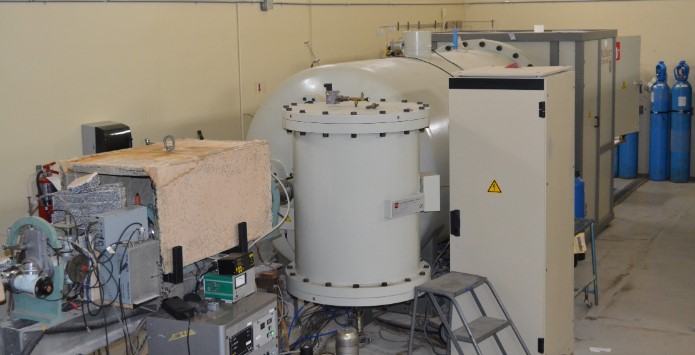Li(p,n)
Experimental Apparatus
3.1 Tandem Accelerator
The accelerator is a 1.25 MeV Tandetron Accelerator System from High Voltage Electronics in the Netherlands (Figure 3). Since the accelerating voltage is applies twice, the total energy of the outgoing proton can be up to 2.5 MeV. The accelerator is rather large and is situated in a dedicated hall in the aptly-names Tandem Accelerator Building. Students won’t actually operate the accelerator, so details of its controls and functions aren’t so relevant.
Figure 3: The Tandem Accelerator used for these measurements.
3.2 Neutron Detector
The BF3 detector used in this experiment is 1” in diameter, and about 10” long. The detector is placed in the path of the beam after about 30 cm of moderating material. The fast neutrons from the Li(p,n) reaction lose energy as they bounce off of the molecules of the moderating material and become slow enough to interact in the detector.
The detector requires 1450 V to sufficiently accelerate the ![]() ionization products. Always be aware of the state of the high voltage and NEVER disconnect the detector while the high voltage could possibly be on.
ionization products. Always be aware of the state of the high voltage and NEVER disconnect the detector while the high voltage could possibly be on.
